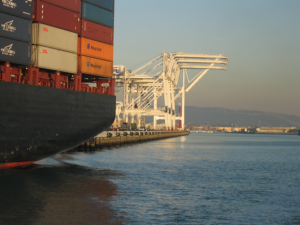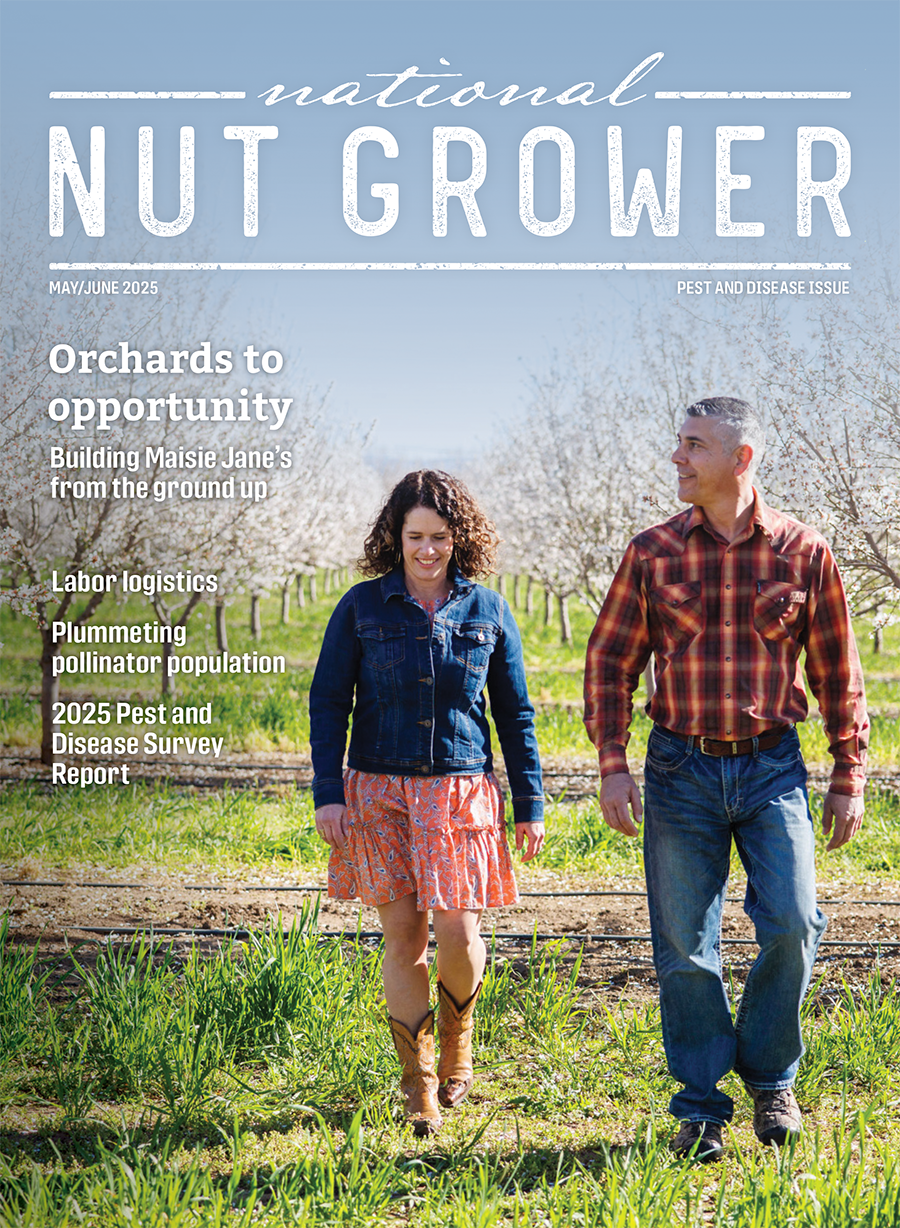
November/December 2023
Evolving MRL landscape puts premium on grower, handler communication
There are many important reasons why almond growers should have regular and serious conversations with their handlers. One of them involves the global regulatory landscape associated with Maximum Residue Levels (MRLs).
MRLs provide legal limits for pesticide residues that might be in food. They are set based on the residues from using maximum labeled rates, and then are assessed to ensure that the level will not pose a risk to humans eating the food. MRL levels will vary based on both the product and how the product is used.

But while there has been global standardization in how to calculate MRLs based on the residue data, there are differences in how much or what types of risks are acceptable in different countries or whether a country has set an MRL for a particular crop/pesticide combination. The result: residues that are legal on nuts in one country may not be legal in another.
The subject of constantly evolving MRL regulations was the focus of an international conference earlier this year in San Diego that was attended by several Almond Board of California (ABC) professionals. Known as the Maximum Residue Level Harmonization workshop, the meeting is hosted by the California Specialty Crop Council. It was a chance for people from the public and private sectors to talk about an issue that affects growers and processors globally, and particularly crops that are highly exported such as almonds.
A major topic at the workshop was the increasing challenges around MRLs in the European Union. The EU has set tougher MRL standards for almonds and other commodities compared to other global markets. The difference in standards has often created frustration and confusion for California almond handlers and growers, who ship roughly 25% of their crop to Europe.
Additionally, the EU is also considering looking at how they could apply their MRL standards to impact stewardship issues that they find important. “It is believed by some that global environmental concerns such as pollinator health could be positively affected by reduced MRLs” said Gabriele Ludwig, the director of environmental policy for the Almond Board, who attended the workshop.
“Because of that, there are discussions and considerations regarding the possible impact of lower MRLs and thus the limit of pesticide use outside of the EU, at least for the products being imported to the region.” Ludwig explained.
Another country that came up at the MRL workshop is Mexico, where the government has indicated an interest in reducing pesticide usage among its farmers, starting with not allowing the import of glyphosate.
“We don’t know how much longer they’ll defer to U.S. tolerances or whether at some point in time they’ll say, ‘You’ll have to follow our own tolerances,’ whatever that might be,” Ludwig said. “It’s just interesting that a longtime partner that we’ve always relied on could be changing the rules of the game in the near future.”
In recognition of the expanding international inconsistency on MRLs, the Almond Board over the last year created a more holistic pesticide strategy. It is an effort to look at the almond industry’s pesticide use across the board and identify the threats and opportunities in the changing landscape. Not only is the EU considering additional limits on the use of chemical pesticides, but California is in the process of doing so as well.
At the same time, there is a lot of new technology entering the pest management world. The strategy identifies actions either ABC or others can take to ensure almond growers and handlers can both effectively manage pests as well as meet international, domestic and customer expectations.
A key outcome of the strategy is to share information more regularly with California’s estimated 7,600 almond growers and 100 handlers. ABC can review usage data, residue data and trends in MRLs to assess when there may be a trade issue because of MRLs. In many cases, even if another country has a lower MRL, there are no residues in the nuts, so the lower tolerance is not a concern.
“A lot of it was driven by how we can help the industry have a better sense of what’s happening with MRLs, and how that might affect the pest management choices of growers,” said Ludwig. “Because there’s a time lag of when you might apply a treatment and when those nuts are exported. You may do a treatment in May and the export may not happen until a year or a year and a half later, at which time things could have changed from a regulatory perspective.”
Aside from a lag in timing where MRLs can change, growers also aren’t always aware of where their nuts are going and how much is heading to a market with tighter MRLs. Ludwig advised growers to talk with their handlers about where their nuts may end up. For instance, growers whose handlers export more nuts to the EU may want to consider that when making pest management decisions.
California almond growers are great stewards, leveraging integrated pest management strategies that incorporate both chemical and non-chemical tools.
“I think this is an area for the first time that we’ll see handlers, more and more, talking to their growers about things to do or not to do related to pesticide use, which is traditionally not the way almonds have been grown,” she said. “Growers have made their decisions solely on what they were seeing in the orchard and handlers had to deal with the export market requirements. But in this arena, especially if the EU is a large part of a handler’s portfolio, I expect there will be more conversations about what compounds to use so we don’t have residues in the EU.”
For more information on current MRLs, Ludwig recommends that growers and their PCAs check on the MRL database, fas.usda.gov/maximum-residue-limits mrl- database, which provides a list of maximum acceptable levels of pesticides and veterinary drugs in food and agricultural products in the U.S., as well as 70 other countries, the EU and the Codex Alimentarius Commission.









